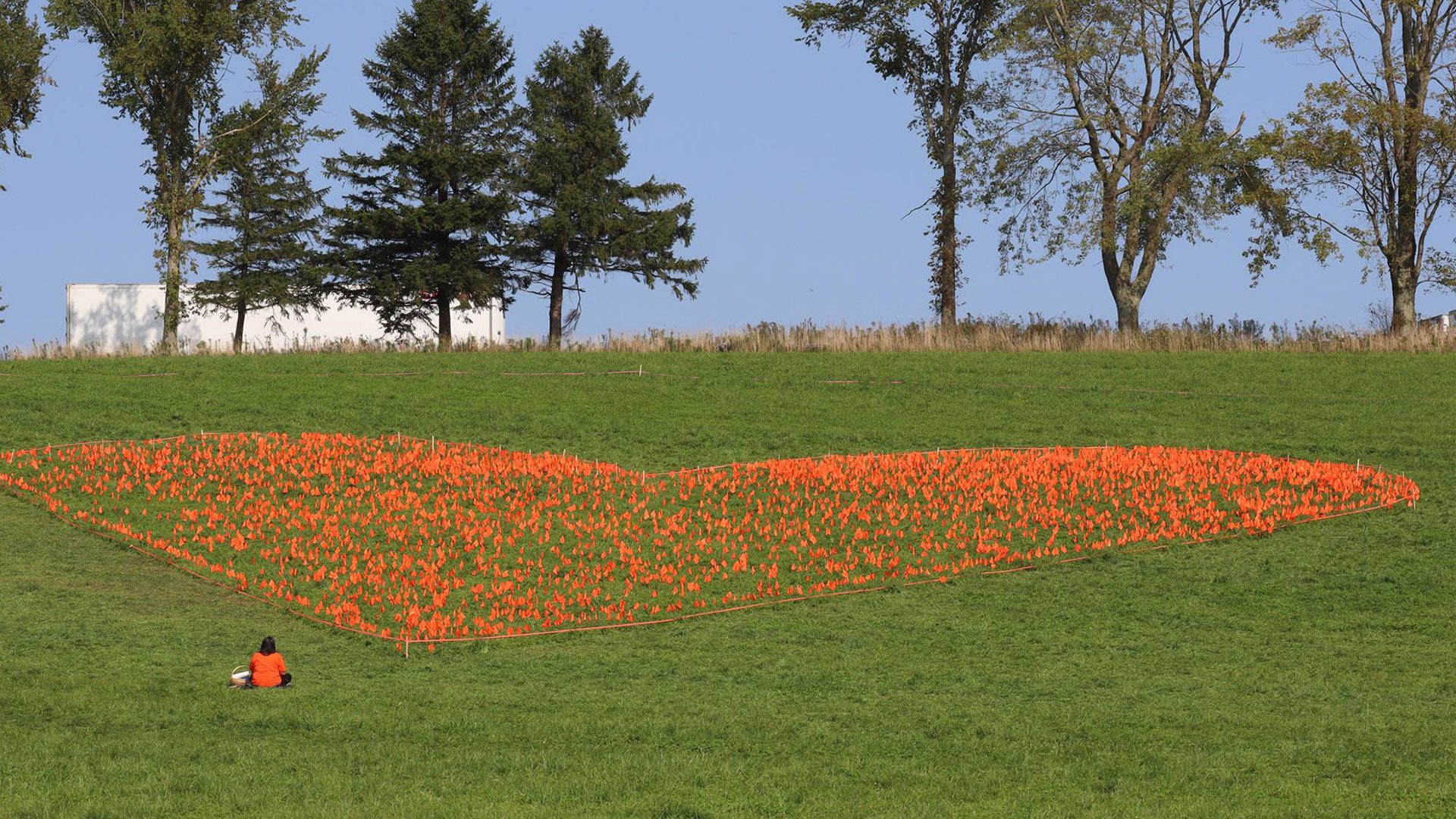Students from regional schools in Nova Scotia joined forces with students from Sipekne’katik Mi’kmaw Nations to plant orange flags at the former Shubenacadie Indian Residential School.
“Today we are changing the narrative,” said De-Anne Sack, a band councillor of the Sipekne’Katik Nation. “This orange heart is love it is love for our people, love for our language love for our ceremonies, love for our culture, love and we are teaching our littles about love.”
With flags in hand, students made their way up a hillside where the school, managed by the Catholic Church between 1930 and 1967, was located at the top of the hill.
Thousands of Mi’kmaw and Wolasoqiyik children were forced to attend.
The building was destroyed by fire in 1986.
“The impact of residential schools goes on and on and on,” Sack said. “The intergenerational trauma that continues to this day and it show in different forms of societal issues that people are plagued with.”
The site is now designated as a historic site – a place of ceremony to help heal and educate youth.

Grade 12 student Sydney Mason of the Sipekne’Katik Nation says the day is a step towards healing – but more needs to be done.
“The amount of change is wonderful but it still isn’t done and I hope to be here and see more change next year,” said Mason.
Survivor Frances Paul said the day is about education.
“Today was a lovely turnout with all these beautiful students and them learning about what happened up here and it was just beautiful to see all these kids being here I loved it,” said Paul.
By the end of the day, 1,500 flags were planted inside the heart.









